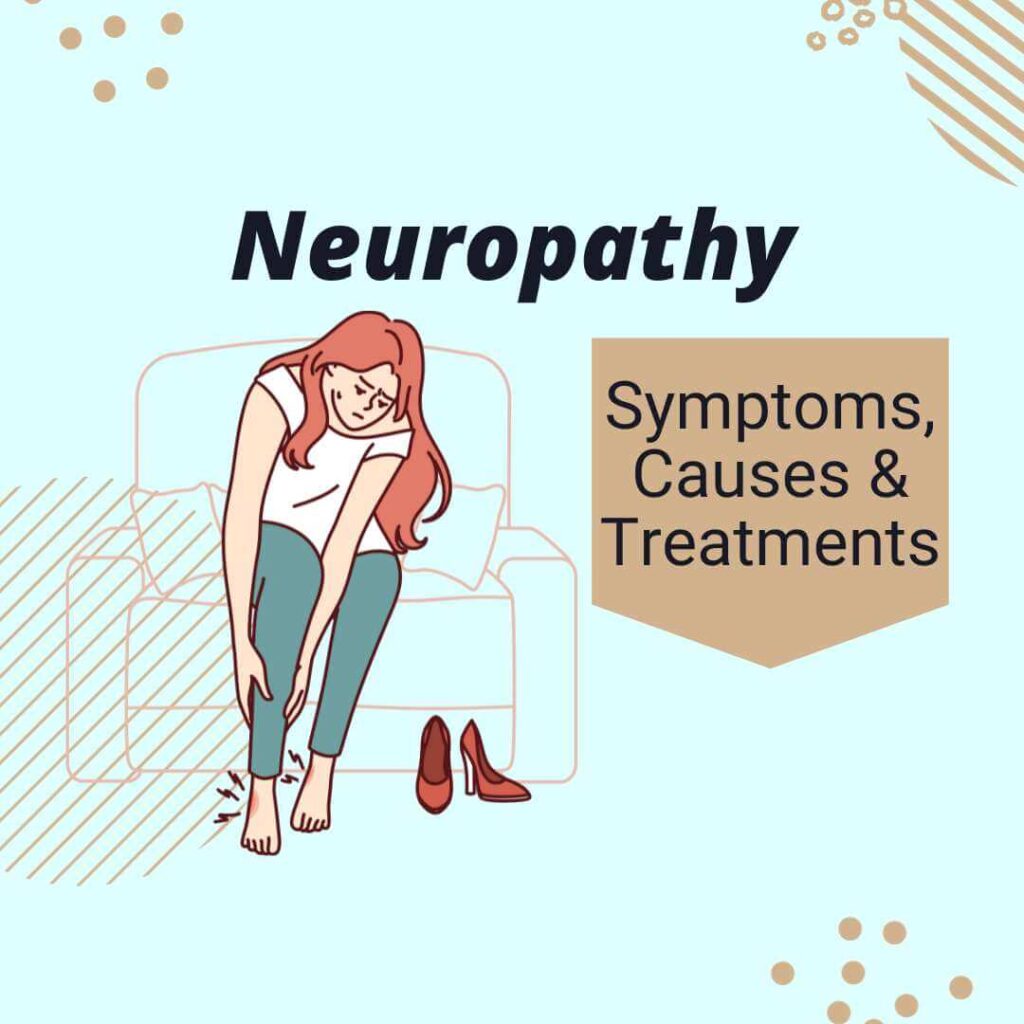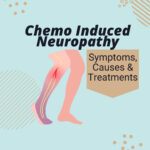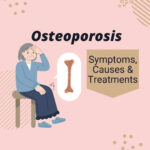Living with neuropathy is a nightmare. From its impact on your daily life to the emotional toll it puts on you, we know what you are going through. Approximately 5% to 7% of people aged 45 and above experience some type of peripheral neuropathy.
Explore with us what neuropathy is, its potential causes, symptoms, and effective treatment options available to manage it.

Key Takeaways
- Neuropathy is a condition that causes nerve damage and can result in symptoms like numbness, tingling, and muscle weakness.
- There are various causes, including diabetes, autoimmune diseases, infections, trauma or injury, medications, and nutritional deficiencies.
- Diagnosis involves physical examinations, reviewing medical history, conducting nerve conduction studies and blood tests.
- Treatment options include pain medications, therapy sessions such as physical or occupational therapy, and making lifestyle changes to manage the condition effectively.
What is Neuropathy?
Neuropathy is a condition characterized by damage to the peripheral nerves, leading to symptoms such as numbness, tingling, burning pain, muscle weakness, cramps, and hyperactive nerves.
Definition and overview
Neuropathy means nerve damage. It occurs in the peripheral nervous system. This system lets the brain and spinal cord talk to the rest of your body.
Types of peripheral neuropathy
There are many different types of the condition. These include:
- Peripheral Neuropathy: This is nerve damage outside the brain and spinal cord. Due to this, you may feel numbness and tingling.
- Autoimmune Neuropathy: This is when your body’s defense system harms your nerves. You could feel a burning pain or lose some feeling.
- Diabetic Neuropathy: High blood sugar can harm your nerves over time. This can lead to muscle weakness, cramps, and changes in skin, hair, or nails.
- Motor Neuropathy: This harms the nerves that control how your muscles move. You might have muscle twitching or trouble moving parts of your body.
- Proximal Neuropathy: This type of nerve damage occurs in the hips, buttocks, or thighs and leads to pain in these areas.
- Focal Neuropathy: Damage to a single nerve results in weakness or pain in that specific place.
- Autonomic neuropathy impacts the internal organs. Autonomic nerves control organs to regulate activities that people do not control consciously, such as breathing, digesting food, and heart and gland functions. The autonomic nerves regulates involuntary activities such as respiration, digestion, as well as the functions of the heart and glands. This uncommon condition can lead to symptoms such as hypotension or difficulties with perspiration.
- Idiopathic Neuropathy is the condition called when no cause can be identified.
Signs and symptoms of peripheral neuropathy
Symptoms depend on the specific nerve fibers impacted and the extent and nature of the injury. The manifestation of symptoms can occur over a period of days, weeks, or even years.
Symptoms of peripheral neuropathy include:
- Sensory symptoms like numbness and tingling are often some of the first things people feel. You might find that your foot or hand feels like it’s asleep, or you might be unable to feel vibrations, especially in hands and feet. Sometimes, this feeling moves up into the arms and legs.
- Pain is hard to ignore as it often feels sharp or burning. Some people say it feels like a stab wound, while others talk about a prickling sensation.
- Motor symptoms like muscle weakness might make daily tasks harder for you, so watch out for any sudden cramps or muscle loss too. These could be signs of neuropathy.
- Autonomic symptoms like blood pressure changes, sweating or bladder problems.
Causes of neuropathy
Diabetes
Type 2 diabetes is the most common cause of peripheral neuropathy. Diabetes is a condition where the body has high levels of sugar in the blood. It can cause damage to the nerves, which is called diabetic neuropathy. People with diabetes may experience problems with movement and sensation.
The exact cause of diabetic neuropathy is not known, but factors like genes and lifestyle can play a role. To prevent it, it’s important to control blood sugar levels and manage other risk factors for diabetes like healthy eating habits and exercise. Read this article to explore whether diabetic neuropathy can be reversed.
Autoimmune diseases
When you have an autoimmune disease, your immune system mistakenly attacks healthy cells and tissues. This can lead to chronic inflammation and damage to your peripheral nerves. Some examples of autoimmune diseases that can contribute to neuropathy are Sjogren’s syndrome, lupus, rheumatoid arthritis, and Guillain-Barre syndrome.
Infections
When you have an infection, like a bacterial or viral infection such as the varicella-zoster virus, it can attack the nerve tissues and lead to damage.
Trauma or injury
This occurs when there is damage to the nerves as a result of accidents like automobile crashes, falls, sports injuries, or even medical procedures.
Medications
Certain medications can cause neuropathy. Some drugs like Etanercept (Enbrel), Infliximab (Remicade), Leflunomide (Arava), and Tacrolimus have been associated with nerve damage.
Cancer patients undergoing chemotherapy may also experience side effect of their treatment. It’s important to be aware of these potential risks when taking certain medications, so it’s always good to discuss any concerns or questions you may have with your healthcare provider.
Nutritional deficiencies
Nutritional deficiencies can also play a role, especially in older adults. When our bodies don’t get enough essential vitamins and nutrients, it can lead to problems with our nerves. For example, not having enough thiamine, niacin, vitamin B12 or pyridoxine (vitamin B6) can contribute to such damage.
So it’s important for seniors to make sure they’re getting enough key vitamins like B12 through their diet or supplements.
In addition to vitamin deficiencies, excessive levels of certain vitamins can also have negative effects on the nerves. It’s all about maintaining a balanced intake of necessary nutrients to keep your nervous system healthy.
How is neuropathy diagnosed?
To diagnose neuropathy, doctors may perform a physical examination, review the patient’s medical history, conduct nerve conduction studies and blood tests, as well as imaging tests. These assessments help in diagnosing neuropathy accurately and formulating an appropriate treatment plan based on the findings.
Physical examination
During a physical examination, your healthcare provider will carefully assess your body to look for signs of neuropathy. They may check your muscle strength, sensation, and reflexes.
Remember that early detection through physical examination is crucial for timely intervention and management of neuropathy. It allows healthcare professionals to identify any underlying causes or contributing factors that need to be addressed in order to slow down the progression of it and relieve symptoms effectively.
Medical history
Doctors will ask you about your medical history to help diagnose neuropathy. They want to know about any symptoms you have and what makes them better or worse. Your medical history is important because it helps identify potential causes of neuropathy.
Nerve conduction studies
These are tests that help doctors diagnose and monitor peripheral neuropathy. These tests are often done alongside electromyography (EMG).
During a nerve conduction study, flat electrodes are placed on your skin. A low electric current is then used to stimulate your nerves. This helps the doctor assess the integrity of your nerves and diagnose any diseases or disorders affecting them.
The results from these studies can also give information about how severe the neuropathy is and what type it might be – whether it’s axonal or demyelinating. Nerve conduction studies are important for both diagnosing peripheral neuropathy and keeping track of how well treatment is working over time.
Blood tests
Blood tests are an important tool for diagnosing neuropathy. They can help detect low levels of vitamins, signs of inflammation, diabetes, or metabolic issues that can lead to the condition.
Imaging tests
Imaging tests like magnetic resonance imaging (MRI) can help diagnose neuropathy in older adults. These tests can identify nerve compression, tumors, or other internal problems.
For example, an MRI of the spine can reveal if there is pressure on the nerves or if there are any tumors present. It’s important to note that while certain imaging studies can aid in the diagnosis process of peripheral neuropathy, there are no specific tests designed solely for this condition.
However, these tests can still provide valuable information to healthcare professionals when determining a treatment plan for elderly individuals with neuropathy.
Treating Peripheral Neuropathy
Treatment for peripheral neuropathy include medications for pain management, physical therapy, occupational therapy, transcutaneous electrical nerve stimulation (TENS), nerve blocks, and lifestyle changes.
Medications for pain management
There are various medications available to help manage the pain associated with neuropathy. Gabapentin and pregabalin are effective in improving nerve pain caused by peripheral neuropathy.
These medications work by reducing the abnormal electrical activity in the nerves, helping to ease discomfort. Lidocaine, capsaicin, and tramadol are also options for treating neuropathic pain. Non-steroidal anti-inflammatory drugs (NSAIDs) like Aleve or Motrin may also help alleviate neuropathic pain.
Physical therapy
Physical therapy is an important treatment option for neuropathy, especially for older adults. Physical therapists use exercise therapy to improve muscle strength and treat weakness associated with peripheral neuropathy. They also focus on improving balance and overall functioning, which can be affected by gait abnormalities or motor impairment caused by the condition.
Occupational therapy
Occupational therapy is a helpful treatment option for neuropathy. It can assist elderly individuals in managing their symptoms and maintaining physical abilities. Occupational therapy focuses on activities of daily living, such as dressing, bathing, and cooking.
The therapist may provide exercises to improve balance and strength, as well as safety precautions to prevent falls or injuries. They also help with medication management and offer strategies for coping with chronic pain.
Transcutaneous electrical nerve stimulation (TENS)
TENS is a non-pharmacological treatment option for neuropathy. It uses a small device that sends electrical impulses to the nerves through adhesive pads placed on the skin.
TENS helps improve blood flow, alleviate discomfort, and promote regeneration of damaged nerves. The effectiveness of TENS depends on the settings used, such as high-frequency or low-frequency modes.
Although TENS provides short-term relief while in use, it does not cure pain completely. However, it is considered safe and can be an effective part of pain management techniques for neuropathy.
Nerve blocks
Nerve blocks are procedures that can help manage or prevent severe pain. They work by stopping the pain signals from reaching the brain. There are different types of nerve blocks available, both surgical and nonsurgical options.
These include peripheral nerve blocks, which target specific nerves outside the spinal cord; sympathetic nerve blocks, which focus on the sympathetic nervous system; somatic nerve blocks, targeting nerves in muscles and soft tissues; and central nerve blocks that directly affect the central nervous system.
It’s important to note that while nerve blocks can be effective for many people, they may not always provide complete pain relief for everyone with neuropathy.
Lifestyle changes
To manage neuropathy and improve overall health, making certain lifestyle changes can be helpful. Here are some important ways you can take control:
- Regular exercise: Engaging in physical activity on a regular basis can help reduce pain, cramps, and muscle weakness. Exercise also improves muscle strength and control blood sugar levels, especially for individuals with diabetes.
- Quit smoking: Smoking can worsen neuropathy symptoms and reduce blood flow to the nerves. Quitting smoking can slow down nerve damage and lessen the risk of complications.
- Maintain a healthy diet: A balanced nutrition plan is essential for managing neuropathy. Eating a variety of fruits, vegetables, whole grains, lean proteins, and healthy fats can provide the necessary nutrients to support nerve health.
- Foot care: Taking good care of your feet is crucial, particularly if you have diabetes-related neuropathy. Regularly checking your feet for any wounds or infections and practicing proper foot hygiene are vital steps in preventing complications. Learn more about how to treat neuropathy in feet.
Red Light Therapy
Red light therapy is an effective and non-invasive treatment option for people with peripheral neuropathy. Red light therapy involves the use of low-level red light wavelengths to stimulate cellular function and promote healing. This therapy has been shown to improve nerve function and reduce pain in people with neuropathy. The red light wavelengths penetrate deep into the tissues, increasing blood flow and stimulating the production of adenosine triphosphate (ATP) in the mitochondria of the cells. ATP is responsible for providing energy to the cells, and by increasing its production, red light therapy helps to repair and regenerate damaged nerve tissues. This treatment option is safe, painless, and can be done at home or in a clinical setting. It offers a non-invasive alternative to conventional treatments, such as medication or surgery.
Visit CuraYou to read all about the scientific research on red light therapy for neuropathy.
Prevention and Management of Neuropathy
Preventing and treating peripheral neuropathy symptoms involves managing underlying conditions, making healthy lifestyle choices, regular exercise, balanced diet, avoiding toxins and injuries, regular check-ups and screenings, as well as accessing support and resources.
Managing underlying conditions
To start with, it’s important to take care of the underlying causes of neuropathy, i.e. medical conditions that can contribute to its development. For example, if you have diabetes or are undergoing chemotherapy treatment, working closely with your healthcare team can help you keep these conditions under control and reduce the risk.
By regularly monitoring your blood sugar levels and following a proper diet, you can better manage diabetes.
Healthy lifestyle choices
Making healthy lifestyle choices is crucial is another important factor for the prevention and treatment of all types of peripheral neuropathy. Regular exercise is important for keeping your nerves healthy and improving circulation. Maintaining a healthy weight can also alleviate pressure and reduce the risk of developing the disease.
Correcting vitamin deficiencies, particularly vitamin B and D, can help ease symptoms. These vitamins play a vital role in nerve health and function, so taking supplements or incorporating foods rich in these vitamins into your diet can make a difference.
Regular exercise
Regular exercise is an important part of preventing and managing neuropathy symptoms. It can help reduce the risk of chronic pain by 10-15%. Exercise promotes healthy blood flow in small blood vessels, which is beneficial for microvascular health.
It also reduces oxidative stress, which is a factor when peripheral neuropathy develops. Low-impact exercises like swimming and biking are particularly helpful for elderly.
Calf stretches and ankle exercises can provide relief for leg or foot neuropathy.
Balanced diet
A balanced diet is really important for preventing and managing neuropathy. This means eating a variety of healthy foods that give you all the nutrients your body needs. For example, choosing fruits, vegetables, and whole grains can help manage symptoms.
It’s also important to limit foods high in saturated fats, like fatty meats and fried foods.
Avoiding toxins and injuries
Avoiding toxins and injuries that can damage your nerves is also important. Exposure to certain toxins like alcohol abuse and poor nutrition can cause nerve damage and worsen symptoms.
It’s also important to take precautions to prevent injuries that could harm your nerves, such as wearing protective gear when engaging in physical activities or using tools and equipment safely.
Regular check-ups and screenings
By staying on top of routine examinations and tests, healthcare professionals can catch any signs or symptoms of neuropathy early on, allowing for prompt diagnosis and treatment.
This is especially important for individuals with conditions like diabetes, as screening for diabetic neuropathy can help evaluate and prevent the development of this type of nerve damage.
Support and resources
If you’re dealing with neuropathy, there are resources and support available to help you. Support groups can provide a space to connect with others who understand what you’re going through.
Rehabilitation services, such as occupational therapy, can assist in rebuilding strength and improving daily activities. Additionally, these services can offer pain management strategies and education on managing your condition.
Remember that there are people and organizations ready to support you on this journey of managing neuropathy effectively.
When to Contact a Medical Professional
If you experience symptoms like numbness, tingling, or muscle weakness, it’s important to contact a medical professional. They can help diagnose the cause of your neuropathy and recommend appropriate treatment options.
Don’t wait – take action for better health today!
FAQs
1. What are the common symptoms of neuropathy?
Common symptoms of neuropathy include numbness or tingling in the hands or feet, sharp or burning pain, muscle weakness, and difficulty with coordination.
2. What causes neuropathy?
Neuropathy can be caused by various factors such as diabetes, injury or trauma to nerves, certain medications, infections, and vitamin deficiencies.
3. Can neuropathy be cured?
While there is no cure for neuropathy, treatments are available to manage symptoms effectively and slow down its progression. These may include medication, physical therapy, red light therapy, lifestyle changes (such as managing underlying conditions), and pain management techniques.
The outlook for peripheral neuropathy varies. In most cases the condition can be managed well and symptoms improve, while in a small group of people the set of symptoms may worsen over time.
4. Are there any home remedies for managing neuropathic pain?
There are some home remedies that may help manage neuropathic pain such as exercising regularly to improve circulation and reduce inflammation, practicing stress reduction techniques like meditation or deep breathing exercises, maintaining healthy blood sugar levels if diabetes-related neuropathy is present. Red light therapy and TENS are common alternative treatment options. However it’s important to consult with a healthcare provider for personalized advice based on the individual’s condition.
References
https://www.cancer.gov/about-cancer/treatment/side-effects/nerve-problems
- How To Improve Gut Microbiome – 26 May 2024
- Chemo neuropathy treatment: What to do? – 19 May 2024
- How to Prevent Osteoporosis: Effective Strategies & Simple Steps – 28 December 2023





